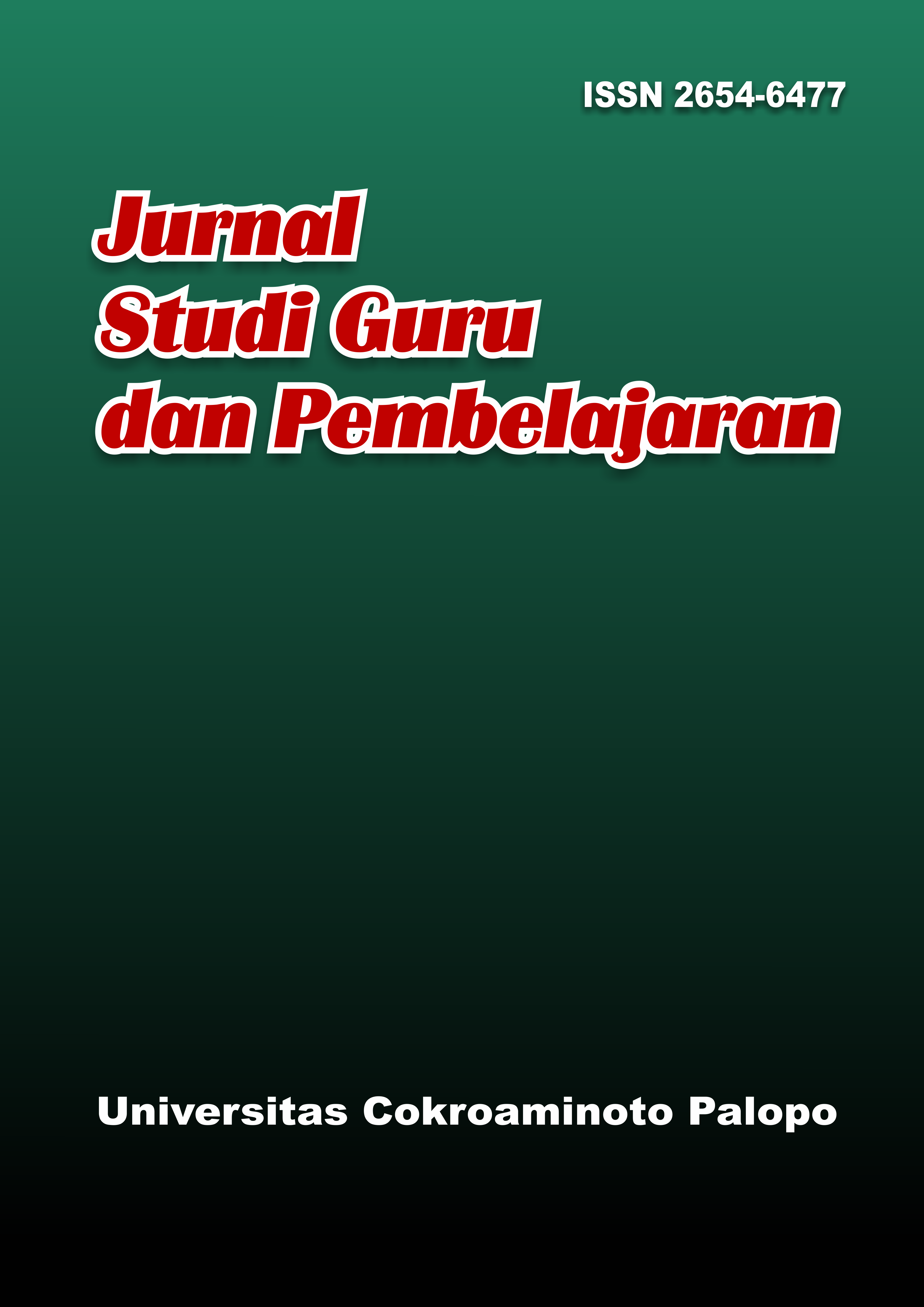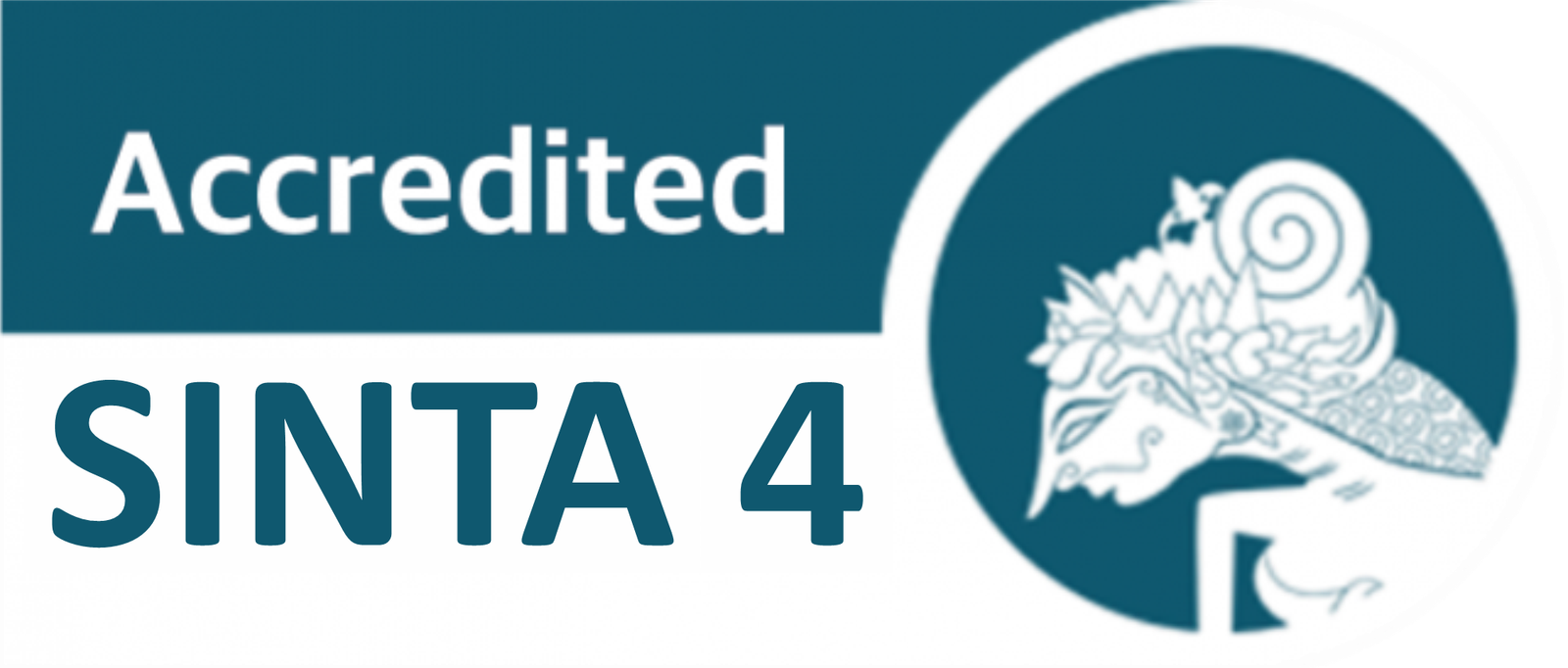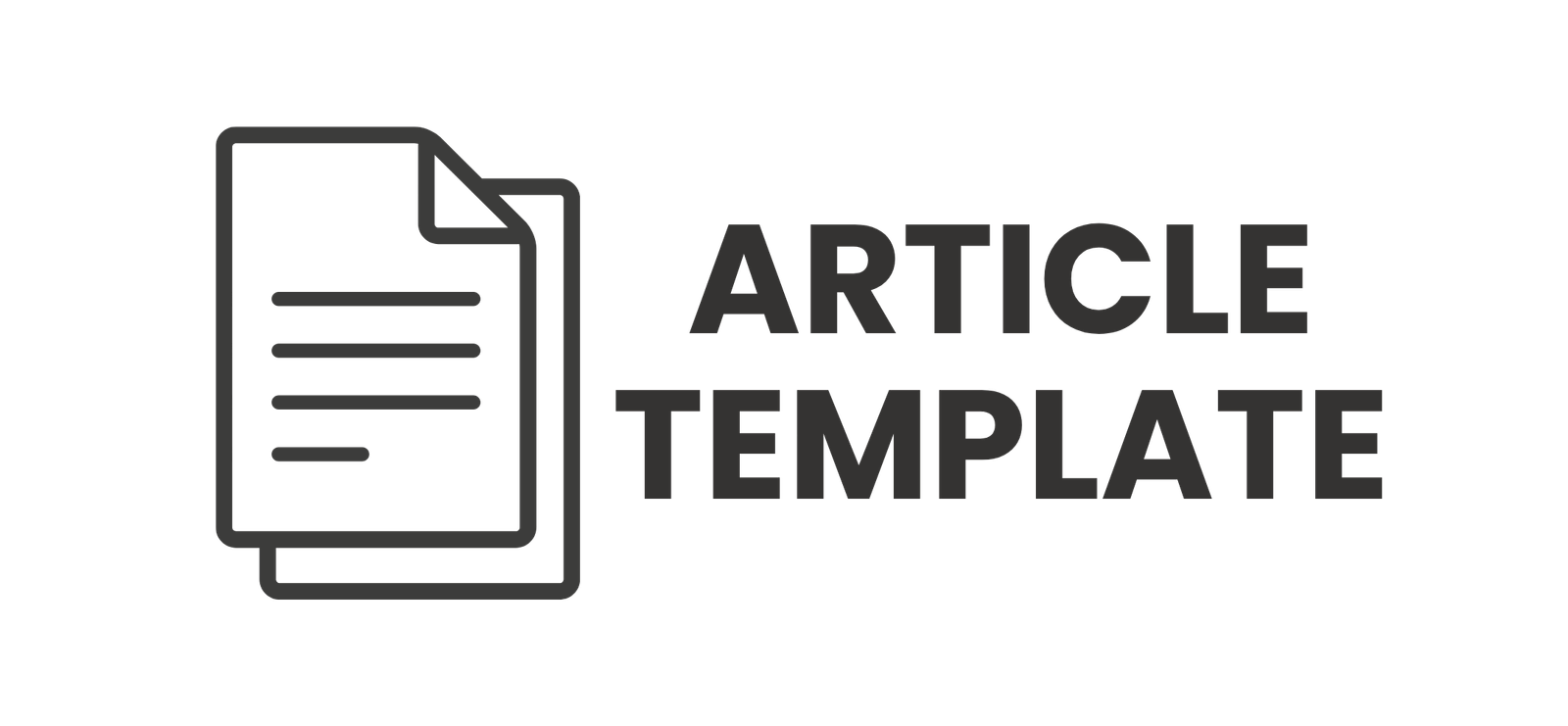Comparative Analysis of The Students’ Speaking Anxiety Level at English Study Program of UKI Toraja
DOI:
https://doi.org/10.30605/jsgp.6.1.2023.6296Keywords:
Speaking Anxiety, English As A Foreign Language (EFL), Academic Semester, Comparative Anaylisis, Language Learning MotivationAbstract
This study investigates the speaking anxiety levels among students enrolled in the English Study Program at UKI Toraja, motivated by a noticeable reluctance among students to engage in speaking competitions and public speaking events. The research seeks to determine whether there are significant differences in speaking anxiety levels across students from different academic semesters. A quantitative approach was used to assess these levels, with participants comprising 15 first-semester students, 8 third-semester students, 15 fifth-semester students, and 23 seventh-semester students. The data were collected through an 18-item questionnaire designed to evaluate common indicators of speaking anxiety, including cognitive, emotional, and physiological symptoms that typically occur during speaking tasks. The analysis was conducted using One-Way Analysis of Variance (ANOVA) through Microsoft Excel to identify whether the variations in anxiety across semesters were statistically significant. The findings revealed substantial differences in anxiety levels among the students. For the low level of anxiety, the analysis produced a p-value of 5.42E-14, indicating a statistically significant difference. Similarly, for the moderate level of speaking anxiety, the p-value was 4.19E-12, and for the high level, the p-value was 2.62E-14, both below the standard significance threshold of 0.05. These results confirm that students’ speaking anxiety does indeed vary significantly across academic semesters, suggesting that anxiety may decrease or shift in nature as students progress through their studies. However, the persistence of high anxiety in some advanced students also suggests that academic experience alone may not be sufficient to eliminate anxiety without targeted support. In conclusion, this study contributes to the broader understanding of speaking anxiety in EFL contexts by highlighting its variation based on semester level, thus emphasizing the need for semester-specific pedagogical strategies, early intervention, and continuous support to help learners overcome their anxiety and enhance their oral communication competence throughout their academic journey.
Downloads
References
Abdillah, V. (2016). Students' Anxiety Factor in Speaking English (A Case Study at the 8 th Grade of SMP N 16 Semarang) in the Academic Year THESIS Submitted in Partial Fulfillment of the Requirement for Gaining the Degree of Bachelor in English Language Education.
Adella, S., & Ilyas, M. (2022). An analysis of English oral communication apprehension of the third semester students at English language education of FKIP UIR. Discovery Journal, 1(1), 97-105.
Annisa, D. F., & Ifdil, I. (2016). Konsep kecemasan (anxiety) pada lanjut usia (lansia). Konselor, 5(2), 93-99. https://dx.doi.org/10.24036/02016526480-0-00
Christy, A. (2021, March). The effect of speaking anxiety on students performance in speech class. In Ninth International Conference on Language and Arts (ICLA 2020) (pp. 241-245). Atlantis Press. https://doi.org/10.2991/assehr.k.210325.043
Creswell, J. W. (2014). Research design Qualitative, Quantita... (V. Knight, A. Hutchinson, J. Young, K. Koscielak, B. Bauhaus, & M. Markanich (eds.); 4th ed.). SAGE.
Damayanti, M. E., & Listyani, L. (2020). An Analysis of Students' Speaking Anxiety in Academic Speaking Class. ELTR Journal, 4(2), 152–170. https://doi.org/10.37147/eltr.v4i2.70
Daud, A., Ras, F., Novitri, N., & Audia, C. P. (2019). Factors Contributing to Speaking Anxiety: A Case Study of Pre-Service English Teachers. Journal of Educational Sciences, 3(3), 412. https://doi.org/10.31258/jes.3.3.p.412-422
Downing, V. R., Cooper, K. M., Cala, J. M., Gin, L. E., & Brownell, S. E. (2020). Fear of negative evaluation and student anxiety in community college active-learning science courses. CBE—life sciences education, 19(2), ar20. https://doi.org/10.1187/cbe.19-09-0186
Erdiana, N., Daud, B., Sari, D. F., & Dwitami, S. K. (2020). A study of anxiety experienced by EFL students in speaking performance. Studies in English Language and Education, 7(2), 334-346. https://doi.org/10.24815/siele.v7i2.16768
Erdiana, N., Daud, B., Sari, D. F., & Dwitami, S. K. (2020). A study of anxiety experienced by EFL students in speaking performance. Studies in English Language and Education, 7(2), 334-346. http://dx.doi.org/10.24815/siele.v7i2.16768
Fauzi, I., & Asi, N. (2023). Examining Speaking Anxiety of Indonesian Learners of English: A Case of University Students. Indonesian Journal of English Language Teaching and Applied Linguistics, 7(2), 263-275. http://dx.doi.org/10.21093/ijeltal.v7i2.1338
Febrikawati, F. (2021). An Analysis On Students’ Speaking Anxiety In English Language Education Department At Universitas Islam Riau (Doctoral dissertation, Universitas Islam Riau).
Fitriah, F., & Muna, H. (2019). Foreign language speaking anxiety: A case study at English department students of IAIN Lhokseumawe and Al Muslim University. Jurnal Ilmiah Didaktika: Media Ilmiah Pendidikan dan Pengajaran, 19(2), 140-158. https://doi.org/10.22373/jid.v19i2.5030
Foong, S. S., & Chandran, G. (2020). (Re) Imagining “Dystopian Space”: Memory and Trauma in Yoko Ogawa’s The Memory Police. SARE: Southeast Asian Review of English, 57(1), 100-122. https://doi.org/10.22452/sare.vol57no1.8
Helmold, M. (2019). Excellence in PM. In Progress in performance management: Industry insights and case studies on principles, application tools, and practice (pp. 39-49). Cham: Springer International Publishing.
Hu, X., Zhang, X., & McGeown, S. (2023). Foreign language anxiety and achievement: A study of primary school students learning English in China. Language teaching research, 28(4), 1594-1615. https://doi.org/10.1177/13621688211032332
Hutabarat, A., & Simanjuntak, D. C. (2019). A phenomenological study: Speaking anxiety overwhelms English learners. Acuity: Journal of English Language Pedagogy, Literature and Culture, 4(1), 44-59.
Istoriana, A., & Wafda, A. (2023). Improving Poetry Writing Skills Through Concept Sentence Learning Models in Students. Jurnal Dieksis Id, 3(1), 46-54. https://doi.org/10.54065/dieksis.3.1.2023.198
Johnston, S. W. V. D. D. (2009). Research methods for everyday life. United States of America.
Karatas, H., Alci, B., Bademcioglu, M., & Ergin, A. (2016). An Investigation into University Students⿿ Foreign Language Speaking Anxiety. Procedia-Social and Behavioral Sciences, 232, 382-388. https://doi.org/10.1016/j.sbspro.2016.10.053
Khairani, R. G. M. (2019). An Experiment of Public Speaking Anxiety on College Students. In ICPsy 2019-International Conference on Psychology. https://www. scitepress. org/Papers/2019/94339/94339. pdf.
Kowaas, Y. M. P. (2020). Students’speaking Anxiety Of English Foreign Language (Efl) Class At The Eleventh Grade Of Man 1 Bitung (Doctoral dissertation, IAIN Manado).
Maritu, J. C., Indah, O. D., & Hermini, H. (2023). English Day Program Implementation In The Students’ Speaking Skill Of SMAN 2 Luwu. Jurnal Dieksis ID, 4(1), 53-62. https://doi.org/10.54065/dieksis.4.1.2023.462
Nuridzdzati, R. Y., & Akhiriyah, S. (2023). Exploring students' speaking anxiety. JELITA, 4(2), 160-175. https://doi.org/10.56185/jelita.v4i2.233
Öztürk, G., & Gürbüz, N. (2014). Speaking anxiety among Turkish EFL learners: The case at a state university. Journal of language and Linguistic Studies, 10(1), 1-17.
Ramadhany, D., & Rachman, D. (2023). The The Variation on Speaking Anxiety in Presentation Based on Genders. Journal of English Language Learning, 8(1), 578-589. https://doi.org/10.31949/jell.v8i1.10278
Sugiyati, K., & Indriani, L. (2021). Exploring the level and primary causes of public speaking anxiety among English department students. Journal of Research on Language Education, 2(1), 57-66. https://dx.doi.org/10.33365/jorle.v2i1.906
Taqwa, K., Hidayat, D. N., Anasy, Z., Syafii S, M., & Adrefiza, A. (2022). An Analysis of Students’ Speaking Anxiety in EFL Classroom: A Mixed-Method Study. Edukatif: Jurnal Ilmu Pendidikan, 4(5), 6408-6416. http://dx.doi.org/10.31004/edukatif.v4i5.2999
Yadav, S., Gupta, D. R., & Dr. Pragya Mishra. (2023). Speaking Skills Help in Propagating a Message Effectually. European Economic Letters. https://doi.org/10.52783/eel.v13i3.601
Yoskapela., Susanti., Bahing., & Ristati (2022). A Study on Speaking Anxiety of English Education Study Program Students at the University of Palangka Raya. Journal of English Language Teaching, Linguistics, and Literature, 2(1), 2020, pp. 14-17. https://dx.doi.org/10.37304/ebony.v2i1.4065
Downloads
Published
How to Cite
Issue
Section
License
Copyright (c) 2023 Nina Gayatri, Linerda Tulaktondok, Yizrel Nani Sallata

This work is licensed under a Creative Commons Attribution-ShareAlike 4.0 International License.
In submitting the manuscript to the journal, the authors certify that:
- They are authorized by their co-authors to enter into these arrangements.
- The work described has not been formally published before, except in the form of an abstract or as part of a published lecture, review, thesis, or overlay journal.
- That it is not under consideration for publication elsewhere,
- That its publication has been approved by all the author(s) and by the responsible authorities – tacitly or explicitly – of the institutes where the work has been carried out.
- They secure the right to reproduce any material that has already been published or copyrighted elsewhere.
- They agree to the following license and copyright agreement.
License and Copyright Agreement
Authors who publish with JSGP agree to the following terms:
- Authors retain copyright and grant the journal right of first publication with the work simultaneously licensed under Creative Commons Attribution License (CC BY-SA 4.0) that allows others to share the work with an acknowledgement of the work's authorship and initial publication in this journal.
- Authors are able to enter into separate, additional contractual arrangements for the non-exclusive distribution of the journal's published version of the work (e.g., post it to an institutional repository or publish it in a book), with an acknowledgement of its initial publication in this journal.
- Authors are permitted and encouraged to post their work online (e.g., in institutional repositories or on their website) prior to and during the submission process, as it can lead to productive exchanges, as well as earlier and greater citation of published work.














